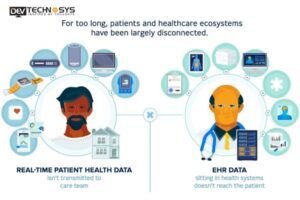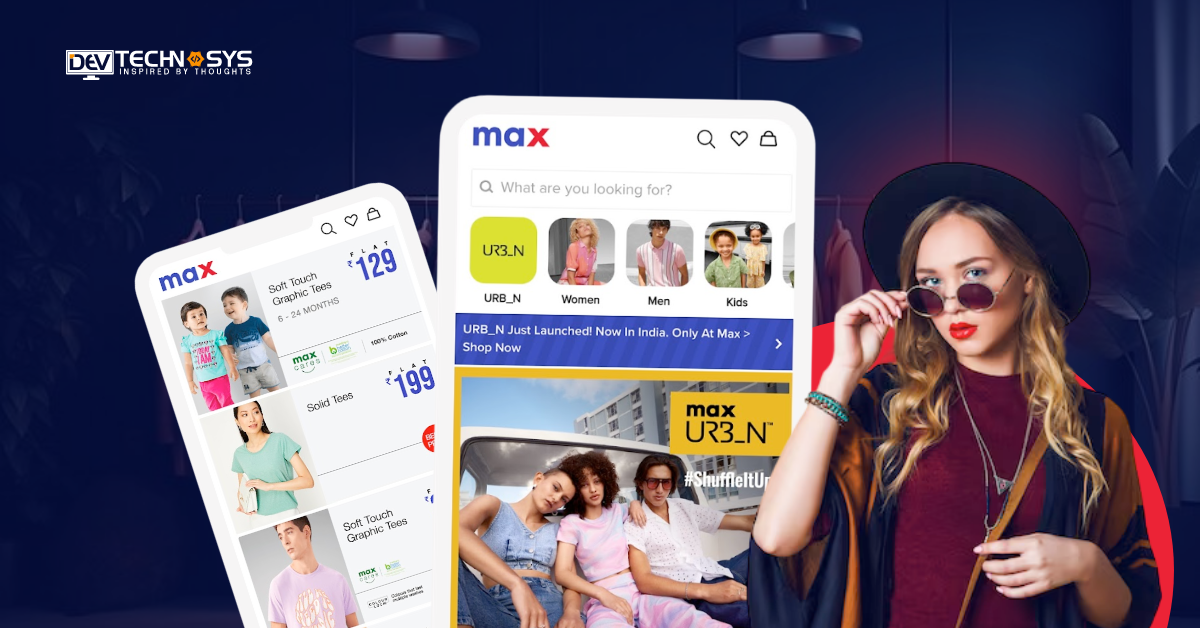EHR systems have made great strides in the healthcare industry. They can still be improved to provide better patient care and more information.
Electronic Health Record (EHR), is an electronic storage of patient-related data. The proliferation of diagnostics, screening tests, and medical imaging has led to a wealth of information about patient health.
There are many ways to share information among healthcare networks. For example, this allows for greater healthcare quality based on information accessibility and collection to medical professionals.
The EHR in healthcare industry’s features has been viewed as a reliable way to improve medical care. The global electronic health records market will reach $40 billion in 2024, which indicates that there is increasing demand for EHRs within healthcare centers.
The advancements in software technology as well as in the healthcare sector are major drivers of the growth in the global market for electronic health records.
The market’s growth is also due to the introduction of artificial intelligence (AI), which was used in the healthcare software development of EHRs. EHRs also played an important part in the management and recording of patients’ data during the COVID-19 epidemic.
Hospitals dominated the market for electronic health records (EHRs) and held the highest revenue share at more than 60% in 2021.
So in this blog we will discuss the role of EHR in the healthcare industry and what is the future of EHR in the healthcare industry.
What is an EHR?

EHR is an acronym for Electronic Health records. A patient’s medical data is kept in an electronic health record (EHR). This includes test results, medication results, medical history, and any other pertinent data.
EHRs can be shared and easily accessed by healthcare providers, allowing for collaboration and communication in patient care.
The reason to invest in healthcare mobile app development is accurate patient diagnosis, improved work efficiency, and output. EHRs can be utilized to speed up handling administrative tasks like invoicing and claim to process.
EHRs are becoming more common in healthcare settings as they provide a better and more accurate way to manage patient data than traditional paper-based records.
Here are Some Well-Known Stats About EHR
- In 2020, it was predicted that the global market for electronic health records (EHRs) will be valued around 29 billion dollars. By 2027, it is projected that the global market for EHRs will reach more than 47 billion dollars.
- The market for electronic medical records worldwide is depicted in this statistic from 2015 to 2024. The market for electronic health records will be worth $40 billion by 2024. The market for 2015 would practically double in size as a result.
- The web-based market category for electronic health records (EHR) was the market leader. In 2021, it represented more than half of all income.
- Hospitals led the electronic health records (EHR) industry and accounted for more than 60% of total revenue in 2021.
Role of EHR in Healthcare Industry

EHR in healthcare industry has been growing and improving the whole healthcare system. Want to know how? Below is the major role of EHR in healthcare industry that is recommended by an on-demand app development company.
1. A Comprehensive View of the Patient
Providers should aim to create dynamic records that are patient-centered. These records will track the care continuum throughout the patient’s life, including sickness and health.
A single, continuous record of a patient gives a complete picture of their overall health and allows for better diagnosis and treatment.
2. Improved Coordination of Care
Clinicians may coordinate and monitor patient care across sites and practices with the use of digital records. The Mayo Clinic2 is an example of a “one-stop” care system. It provides all the services that a patient requires, including testing, surgery, and office visits.
This allows services to coordinate and schedule in a single visit instead of taking up too much time. To ensure better patient care, clinicians from different disciplines and specialties work together to improve outcomes.
3. Information Sharing
It is possible to share information between disciplines, specialties, and hospitals, as well as access charts on-demand via mobile devices, which allows for faster and better decision-making in critical situations. Additionally, if you want to develop a healthcare app that is integrated with the EHR, then you must hire dedicated developers.

4. Streamlined Workflows
EHRs improve productivity and efficiency while reducing paperwork. EHR in healthcare industry is easier to use for staff and patients, which means clinicians have more time to treat patients. Quickly sending prescriptions and referrals reduce wait times and increases availability for patients.
Patients can be notified by automatic reminders when it is time to have their annual checkups. They also get alerted as they reach milestones that will require regular screenings. Integrated patient tracking allows billing and insurance claims to be filed quickly.
5. Data is the Power of Data
Continuous data collection allows providers to provide personalized care and help with preventative measures. Analytics and aggregated patient data can be used to alert providers to bigger trends in health, such as possible flu outbreaks or which strains are most prevalent during flu seasons.
6. Increased Efficiency and Cost Savings
Digitized records and integrated communication methods can dramatically reduce administrative costs. This includes reducing transcriptions, physical charts storage, coding, and claims management.
Additionally, it speeds up interactions between doctors, laboratories, pharmacies, and health insurance and makes care coordination easier.
7. Reducing Error
Digital records can be used to track and document patient interactions more efficiently. This could reduce errors. Digital paper trails make it possible to eliminate illegible handwriting on prescriptions or notes from clinicians.
Also, it is convenient to code for billing or procedures. Integrated systems can be used to detect drug interactions and indicate potential harm.
What’s the Future of EHR in Healthcare Industry

Virtual health is now a necessity. This is especially true after COVID-19 restrictions, which forced both patients and health care providers to be creative. Virtual care is not going away.
EMRs and EHRs are leaps and bounds ahead of their inception in the 1960s. However, they still have a lot to do. What is the future for electronic health records? The role of mobile apps in the healthcare industry has greatly impacted EHR.
As the U.S. government encouraged a shift from volume-based models, the industry is now focused on value-based care. You need an EHR that is ready to provide value-based care.
These are the trends in electronic health records that you should be paying attention to over the next few years.
1. Integration and Interoperability
EMRs are not able to be integrated with other systems. This is a problem. For example, a hospital will need records from outpatient clinics and other hospitals that the patient has been to in order to have a complete picture of their health.
EMRs have been incompatible with each other for a long time. EMRs are not interoperable, so any company looking for this feature should choose an EHR system instead.
EHR-dedicated mobile app developers, merchants, and IT specialists will ensure that EHR systems are updated to comply with the interoperability policy in the coming year. EHRs are generally more robust and may include internal record-keeping capabilities, which would eliminate the need for an EMR.
EMRs don’t integrate as well with other systems as EHRs. EMRs lack interoperability as a functionality. Integration with a tool such as a patient portal would allow patients to exchange information.
Cloud infrastructures are used widely in today’s healthcare industry, despite some interoperability issues. Providers can operate on a limited budget by using a cloud EHR that allows them to pay as they go.
If interoperability is a feature that they require, this can allow people with lower spending capabilities to purchase EHRs instead of purchasing EMRs.
Blockchain technology is utilized to improve semantic interoperability. Blockchain removes the need to integrate expensive EHR systems. Access to patient documents is possible only with a private key. A valid medical professional may be able to view patient records from any location, at any time, without the need for integrations.
2. Cloud Computing
Since the COVID-19 pandemic, staff shortages have been a major problem for medical facilities. According to Mercer’s report, California and New York could see a drop in the number of professionals by 2026.
Cloud computing is a result. Medical organizations can now shift towards outsourcing clinical and administrative services such as lab integration and medical billing. The global medical billing outsourcing market is expected to grow at 9.6% and reach $23 million in 2028.
3. Standardization
The Office of the National Coordinator in Health Information Technology standardizes EHR regulations. Practices without EHR in the healthcare industry that comply with these standards will be subject to penalties and not eligible for meaningful use.
The ONC advises healthcare organizations to use standardized application programming interfaces. (APIs). This will make it safer and easier for patients to use their smartphones to access structured electronic health information.
Integration of APIs with EHR technology facilitates communication between IT systems as well as apps that store and create medical information.
The standardization and mobile app development of APIs allow for quick access to information and exchange between multiple parties. They are increasing because of this.
This guideline states that electronic access to electronic health information (EHI) must be available for all patients, regardless of whether they are structured.
4. Robotic Process Automation
The automated data capture market in electronic medical records is growing worldwide due to improved workflows and higher accuracy. Robotic process automation (RPA), which automates the entry of data by using robots, helps to achieve the required accuracy.
RPA is an approach to fixing EHR problems without having to rebuild the system’s foundation. RPA allows the use of digital labor to preserve what is working and fix the underlying issues.
RPAs make use of system algorithms and programs to automate processes that human resources in an organization would normally be unable to do manually. These programs allow medical facilities to accelerate digitization and correct imperfections in a matter of minutes.
The market for robotic process automation in the global market was valued at $2.9 billion in 2022. It is projected to grow to $6.2 billion by 2030. These integrations will allow EHR users to save time and use their manual resources for other important tasks.
5. Telehealth
Integration of EHR systems and telehealth platforms allows medical organizations to provide remote care and improve their clinical workflows. These integrations allow physicians to quickly and securely transfer patient information between systems (or interfaces) easily.
EMR and Telehealth systems work together extremely well to provide high-quality patient care from a remote location. Below are top benefits that you and your staff can enjoy from their combination.
- Automate data entries
- In one window, sync insurance information
- Streamline virtual care activities
- Enhance patient-physician engagement
- Boost collaboration
The telehealth system updates patient records automatically when information is modified. This allows providers to have immediate access to accurate and up-to-date patient information while providing virtual care.
Global telehealth markets are expected to expand at a 26.6% CAGR, reaching $285.7 million by 2027. This is due to the rising demand for and adoption of EHR/EMR apps, changing population rates, and high healthcare spending.
6. IoT, AI & Voice Recognition
IoT devices are increasing in popularity, particularly in the healthcare sector. Many practices use artificial intelligence to assist physicians in diagnosing and identifying patient health trends. The IoT App development Company and various others are looking into adding voice recognition to EHR software using AI.
One example of companies that are pursuing voice recognition AI within EHR platforms is the Northwell Health and Allscripts agreements. Northwell was unhappy with their current software structure and decided to team up with Allscripts to create a customized solution.
The agreement does not limit Northwell Health’s use of the software. Allscripts will be able to sell the AI-based platform to other healthcare organizations once it is complete.
The integration of natural language processing (NLP) into EHR systems can also improve the efficiency of physicians and patient care. Artificial intelligence systems that can understand doctors using natural spoken language are the future.
Artificial intelligence technology has been integrated into the healthcare system to make electronic systems more efficient. This allows doctors and caregivers to quickly review and analyze unstructured cases using automation tools. This allows admin staff to quickly preauthorize insurance without any errors or discrepancies.
Artificial intelligence can help healthcare professionals in many ways. It can help doctors create unique treatment plans and provide assistance in determining the best treatments. Additionally, it analyzes patient data to give physicians prompt input to address complex cases.

7. Analytics and real-time data
Massive amounts of patient data are stored in health care facilities. Vendors can use patient data, including financial and health information, to help physicians with clinical decisions support (CDS).
Leveraging analytics algorithm predictions can solve interoperability-related accessibility issues. Healthcare software development can also be automated to provide cleaner patient data.
8. Wearable Devices
The number of connected wearable devices will increase in the future. The market for wearable medical technology is expected to grow at a 23.7% CAGR, reaching $95.4 billion in 2028. As wearable medical technology devices become more commonplace, patients are growing more conscious of their health and treatment parameters.
The integration of data from wearable devices and EHR systems opens up opportunities for better patient care. The sensors in wearable devices, also known as wearables or wearables, measure activity, steps taken, and other environmental indicators.
These devices come in many different forms, such as smartwatches and smart glasses. When people install healthcare mobile apps on their phones, they transmit data to those apps.
These devices provide detailed information which doctors can use to monitor a person’s daily activities, their health, and medication habits. These gadgets allow health care providers, such as doctors and caregivers, to remotely monitor their patients’ health via technology.
9. Error Reduction
Patients blamed doctors for making mistakes in handwriting when they received paper prescriptions. While computer-based charts are more accurate, reliance on digitalization can lead to dependency on computers for correct dosages.
2013: A patient was given 38 tablets. However, it was an overdose for a 16 year-old. More often than we think, these mistakes happen. EHR systems must address the issue of physicians receiving too many notifications.
This causes less attention to patients. Practitioners are overwhelmed by the number of messages and patient demands to communicate urgently.
This can cause mistakes and problems, such as scrolling through many notifications and delivering messages. Errors can have grave consequences and may hinder the quality of medication and treatment.
10. Blockchain and EHR
Blockchain technology has lately been applied in the field of healthcare, despite being best known for its usage as a cryptocurrency exchange. Global blockchain technology market share in healthcare is expected to increase at a 39.9% CAGR, reaching $5.8 Billion by 2028.
Blockchain secures EHR data using cryptography and makes it accessible only to those who have access to it. However, healthcare software development solutions will provide you amazing solutions about EHR in the healthcare system.
You can use the blockchain to verify clinical trials and claim results, track medication distribution, authenticate prescriptions and prevent insurance fraud.
Blockchain can also be used by smart contracts to automate actions based on predetermined outcomes, which reduces human involvement. Although blockchain is still relatively new, many EHRs incorporate it to provide security, scalability, and confidentiality.

11. 5G, 6G, and Big Data
The Internet of Things (IoT), which is used to exchange massive amounts of data every day, allows for everyday interactions. The availability of 5G data has led to a dramatic increase in internet speeds, device loads, and data transfer. This impacts all aspects of data, software, and how people interact and use devices.
5G’s high data output can positively impact automation tools, allowing them to produce more than they do now. 6G is the next innovation in the pipeline, creating an upgrade to transmission bandwidth.
Big data analytics could be a major advancement in the healthcare industry. It will provide extensive support in upgrading telehealth services and help improve patient treatment procedures with reduced diagnostic costs.
You can use the advanced data mining techniques and analysis tools that Big Data has available to treat rare diseases.
Conclusion
It is obvious that the EHR in the healthcare industry will continue to benefit from the technological revolution. The new tech brings in new ways of practicing, such as telemedicine and personal health trackers. All of these things will be integrated into patient care with the EHR bringing everything together at the center.
The android app development with innovative technologies depends on having access to precise and current patient data. It is possible to expect a more intuitive interface for medical staff from nurses and doctors to insurance personnel. Patients can also benefit from excellent care because their information is available to their care team.


















